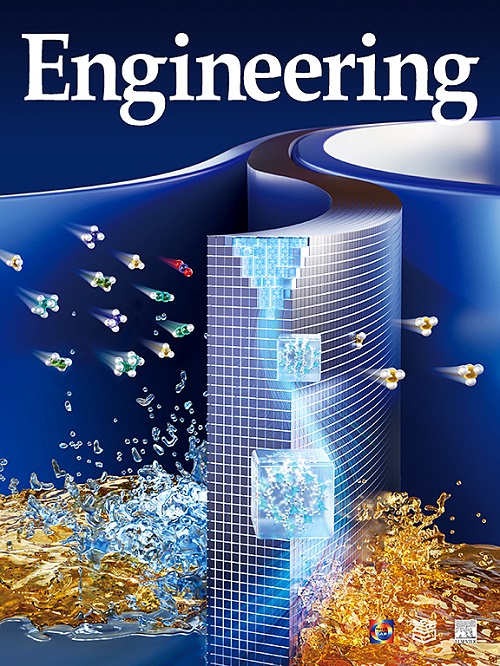The Future of Environmental Engineering Technology: A Disruptive Innovation Perspective
IF 10.1
1区 工程技术
Q1 ENGINEERING, MULTIDISCIPLINARY
引用次数: 0
Abstract
Scientific and technological revolutions and industrial transformations have accelerated the rate of innovation in environmental engineering technologies. However, few researchers have evaluated the current status and future trends of technologies. This paper summarizes the current research status in eight major subfields of environmental engineering—water treatment, air pollution control, soil/solid waste management, environmental biotechnology, environmental engineering equipment, emerging contaminants, synergistic reduction of pollution and carbon emissions, and environmental risk and intelligent management—based on bibliometric analysis and future trends in greenization, low carbonization, and intelligentization. Disruptive technologies are further identified based on discontinuous transformation, and ten such technologies are proposed, covering general and specific fields, technical links, and value sources. Additionally, the background and key innovations in disruptive technologies are elucidated in detail. This study not only provides a scientific basis for strategic decision-making, planning, and implementation in the environmental engineering field but also offers methodological guidance for the research and determination of breakthrough technologies in other areas.
环境工程技术的未来:颠覆性创新视角
科技革命和产业变革加快了环境工程技术的创新速度。然而,很少有研究人员对技术的现状和未来趋势进行评估。本文基于文献计量学分析和绿色化、低碳化、智能化的未来发展趋势,总结了环境工程八大子领域--水处理、大气污染控制、土壤/固体废弃物管理、环境生物技术、环境工程装备、新兴污染物、污染与碳排放协同减排、环境风险与智能管理的研究现状。根据非连续性转化,进一步确定了颠覆性技术,并提出了十项此类技术,涵盖一般和特定领域、技术环节和价值来源。此外,还详细阐释了颠覆性技术的背景和关键创新点。这项研究不仅为环境工程领域的战略决策、规划和实施提供了科学依据,也为其他领域研究和确定突破性技术提供了方法论指导。
本文章由计算机程序翻译,如有差异,请以英文原文为准。
求助全文
约1分钟内获得全文
求助全文
来源期刊

Engineering
Environmental Science-Environmental Engineering
自引率
1.60%
发文量
335
审稿时长
35 days
期刊介绍:
Engineering, an international open-access journal initiated by the Chinese Academy of Engineering (CAE) in 2015, serves as a distinguished platform for disseminating cutting-edge advancements in engineering R&D, sharing major research outputs, and highlighting key achievements worldwide. The journal's objectives encompass reporting progress in engineering science, fostering discussions on hot topics, addressing areas of interest, challenges, and prospects in engineering development, while considering human and environmental well-being and ethics in engineering. It aims to inspire breakthroughs and innovations with profound economic and social significance, propelling them to advanced international standards and transforming them into a new productive force. Ultimately, this endeavor seeks to bring about positive changes globally, benefit humanity, and shape a new future.
 求助内容:
求助内容: 应助结果提醒方式:
应助结果提醒方式:


